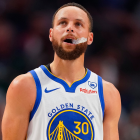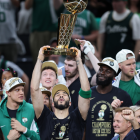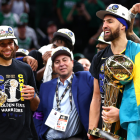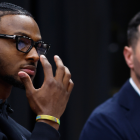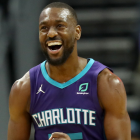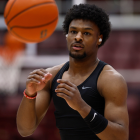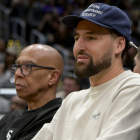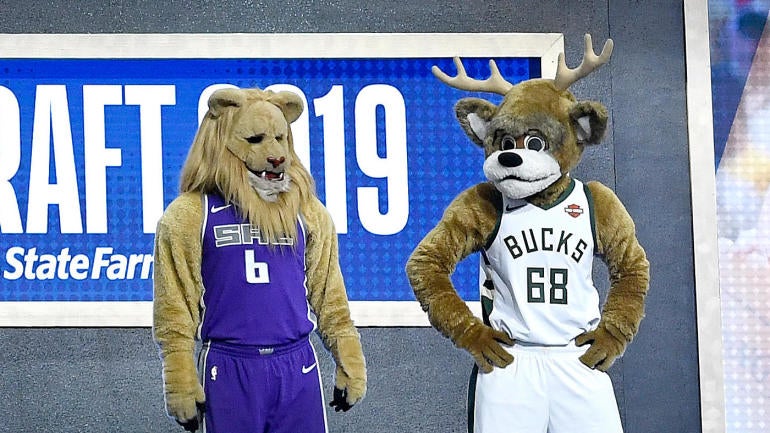
Earlier this week, I was talking to an NBA executive with the primary responsibility for preparing his team for the NBA Draft. He pushed an interesting contention, arguing there are surely stars to be had at the top of Wednesday night's draft but that the real takeaway -- the reason he believes we may look back at it years from now as truly remarkable -- is because of the abundance of real talent to be had in picks 10 through 40.
Then he said something else that underscores the unique nature of this draft in the most unique of NBA seasons: That this one, while offering unique opportunities, may also be the most difficult to assess in NBA history.
"Has [the pandemic] put us in unchartered territory and waters for the first time in our history? Absolutely, he said. "There's always been the pre-draft camp, medical testing, interviews, scouting into March. It is all about information gathering -- painting your decision-maker's picture. It's been very, very challenging."
We may be in the information age, but this NBA Draft will be defined as one that hinges on an information deficit. Several NBA sources -- general managers, executives, scouts and other NBA sources -- described to CBS Sports a murkiness shrouding this most unusual of drafts.
Last spring, I was talking with an NBA general manager with a penchant and reputation for successfully scouting future NBA players himself. While every organization has its own workflow and philosophy in how to properly prepare for the draft -- and in whom and what to trust -- most successful decision-makers prefer to have at least some first-hand time on the road evaluating would-be players.
So I asked this GM, casually, who he'd scouted, who he'd seen, who might be an interesting name to keep an eye on once March Madness and then the pre-draft combine in Chicago unfolded in the coming months.
He looked around sheepishly. "I haven't actually gotten out yet this year," he told me, "but I'm going soon. I'll be on the road nonstop soon."
A short time later, the world shut down. And that NBA general manager -- who will make picks for his organization tonight -- lost his chance to see a single would-be NBA player in person before making those decisions.
There are myriad of extra challenges this year in trying to pierce the normal fog inherent to evaluating teenagers and young men with an eye toward what kind of player, teammate and person they'll be in one, three, five years: Less accurate medical information. Zoom interviews replacing in-person get-to-know-yous. Chicago's mid-May combine, an event with less import for top picks but value for later selections, scrapped. Traditional individual workouts that can lead to startling insights are a nonstarter. And all those games, those that some NBA decision-makers planned to use to play catch-up in March, that simply vanished.
NBA sources described a league in which many of the people making the calls tonight will be flying largely blind compared to years past.
"At minimum, there are at least 10 to 11 people who are head of basketball ops who do little to no scouting and try to play catch-up later in the process," one league source said. "One-third of the top decision-makers calling in picks tomorrow are doing it based on film and chance. Maybe their model is to catch up late and aggregate enough info, but this year they don't have that."
We've seen this information deficit play out on a smaller scale in years past with the game's international talent pool. Some teams have excellent international scouts. Some don't. Some organizations' international scouts truly command the ear of their GM back here in the states. Some don't.
There's also a variance in the decision-makers' time scouting those players themselves, and it can culminate in international players like Luka Doncic being undervalued or, conversely, someone like Frank Ntilikina going too soon.
Yes, misses happen all the time. But all of us, NBA talent evaluators included, have more comfort with what is known first-hand. That degree of uncertainty, larger for some teams than others, has mushroomed substantially this time around.
Drafting is difficult. It's a kind of alchemy we like to pretend is an exact science -- part intuition, part skill, part timing, part luck, part really, really hard work -- leading up to draft day. There are no guarantees, but those who collect the most and best information tend to do better in the long run.
Scouts like to tell you that the tape doesn't truly, always, tell the tale. That what a player does in the video matters more if you have the context not there -- how his teammates responded to his success or failure, the posture and approach to coaching during timeouts, a player's mood on the bench, and myriad of other tells and signs that paint a whole picture of a would-be star. Or bust. The things you need to be on hand for.
Every organization and individual has its approach. Some scout more than others. Some rely more on in-person interviews. Some believe in-person workouts -- like the famous showdown between high school kid Kobe Bryant vs. Michael Cooper, in which Jerry West saw a future all-time great -- are key.
Much of that is now gone.
We -- fans, scouting experts, scouts, GMs, media and NBA columnists -- like to pretend we have it all figured out. That we're in the know. But an NBA Draft, for everyone, is a game of chance.
Some are playing poker, in which skill can give you an edge. Some are playing blackjack or roulette, hoping the odds shift in their favor.
This year -- in true 2020 fashion -- there will be many more teams in the latter position, hoping a potentially promising if nebulous draft turns in their favor as they work with less information than they've ever had before.











